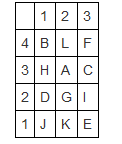Navigating the world of competitive exams, like Bank, SSC, and MBA tests, requires students to learn some very important topics. Among them, “Reasoning Puzzle Questions” and “Seating Arrangement Questions” are two big ones. These questions help test-takers prove their thinking skills in the exams and also improve their general logical abilities.
So, what are “Reasoning Puzzle Questions“? These questions make students think hard and use the given clues to find answers. They challenge the students to connect different pieces of information in a logical way, helping improve their thinking skills.
Now, let’s talk about “Seating Arrangement Questions“. These questions test how well a person can picture and set up information in their mind. They need a lot of focus, patience, and understanding of tricky instructions. They’re key for knowing if a student is good at problem-solving.
Interestingly, many tests mix “puzzle and seating arrangement” together. When we see “puzzles & seating arrangement” in a question, it means students need to use both skills to find the answer. This mix of “puzzle seating arrangement” shows how important these topics are.
There are also other materials like “puzzle questions reasoning” that give more details about the different puzzle types. Some students, while studying these reasoning topics, also look at resources from other subjects, like “puzzle and seating arrangement”, to strengthen their overall skills.
To wrap it up, “Reasoning Puzzle Questions” and “Seating Arrangement Questions” are more than just exam topics. They are crucial skills needed in many job fields. So, learning the details of “puzzle and seating arrangement” is not only for passing exams but also for future career success. Study hard, practice a lot, and use these topics to shine in the world of competitive exams!
Set-57
Seven cars A, B, C, F, G, H and I of different colour are parked facing north. Each car is either a petrol or a diesel car. No two cars appearing consecutively in alphabetical order are parked immediately next to each other. E.g. C and F can be parked immediately next to each other, but F cannot be parked immediately next to G or E and so on. Red car is parked at an extreme end, but it is not a diesel car. F is parked fourth to the right of A. A is not green in colour. B is a yellow coloured diesel car which is nor parked at any extreme end and is an immediate neighbour of F and a black coloured car is also an immediate neighbour of F. Two cars are parked between I and G, one of them is parked at an extreme end but neither of them is black in colour. C is pink coloured car and I is a diesel car. There are three petrol cars and none of them are immediate neighbour to each other and only one of them is at an extreme end. Green car is parked second to the left of white car. One of the car is blue in colour.
Answer following questions based on above information:
1. What is colour of H?
2. Which of the following is white in colour?
3. What is position of B with respect to A?
4. Which of the following is a pair of diesel cars?
5. How many cars are there between C and H?
Set-58
Twelve persons A, B, C, D, E, F, G, H, I, J, K and L were living on a building with 4 floors which were numbered 1-4 from bottom to top. Every floor had 3 flats which were facing the north. The flats were numbered 1-3 from left to right. None of the flat was vacant.
• B lived 3 floors above K who lived to the immediate left of E.
• E and C shared the same flat number. C had the same flat and floor number.
• D was 2nd to the left of I.
• A’s flat number was twice as that of J’s flat number.
• H lived just above G but they did not share the same flat number.
• H and F lived on consecutive floors but did not have same or consecutive flat numbers.• C lived on one of the floors above I.
• B and A did not share the same flat number.
• L did not live on the same floor as H or I.
6. Four of the following bear a similar relationship and hence form a group, who among the following is not a part of that group?
7. How many persons lived above L?
8. Who lived in flat 3 of floor 2?
9. Who among the following lived to the immediate left of K?
10. Who among the following lived on one of the floors above A?
(a) C
(b) H
(c) F


